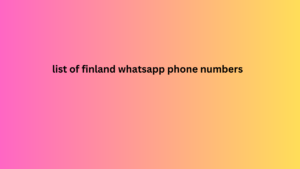Tooltip vs Snackbar – When to use each?
While both are common elements of interface communication, their functions, contexts of use, and limitations are very different. This article breaks down when and how to use them correctly to optimize user interaction with your product.
A tooltip is a small pop-up box that appears when the user interacts with an element, typically on hover or long press in touch interfaces. Its purpose is to provide additional information, clarification, or context about a specific feature or element without taking up permanent space in the interface.
When to use a Tooltip:
- Contextual clarity: Use it to explain icons, abbreviations, or functionality that isn’t intuitively obvious.
- Avoid overloading the interface: If a full explanation is not necessary for all users, a tooltip can offer details only when they are required.
- Precise interactions: Ideal for specific elements where the user needs additional but non-disruptive information.
Example: On a toolbar, a gear icon might need a tooltip that says “Settings” for users who don’t immediately recognize it.
What is a Snackbar?
A snackbar is a short message that appears temporarily at the bottom of the screen. This type of notification is less intrusive than a modal or alert and is designed to inform the user about an action that has just occurred, such as a confirmation or system status.
When to use a Snackbar:
- Short Notifications: Ideal for informing that an action has been successful or for providing quick updates.
- Immediate actions: In some cases, these may include a contextual action, such as “Undo” or “View.”
- Limited persistence: Snackbars automatically disappear after a few seconds, so they’re best for messages that don’t require prolonged attention.
Example: After deleting a file, a snackbar might list of finland whatsapp phone numbers display “File Deleted” along with an option to undo.
Key Differences: Tooltip vs Snackbar
Although both elements are order georgia peach Pound cake online To discrete and temporary, their purpose and the context in which they are used are different:
Main function
- Tooltip: Explain specific elements or functions.
- Snackbar : Notify changes or betting data results of actions.
Duration
- Tooltip: They persist as long as there is interaction.
- Snackbar : They appear briefly and disappear.
Interaction
- Tooltip: Requires hover or long touch.
- Snackbar : These appear automatically or after an event.
Position
- Tooltip: Next to the interacted element.
- Snackbar : Bottom of the screen.
Ideal use
- Tooltip: Contextual details about an item.
- Snackbar : Quick confirmations or messages.
Common mistakes when using them
- Tooltip as a notification: Tooltips are not designed to communicate system information or confirm actions. If the user does not interact with the element, they will not see the message.
- Snackbar for long details: Snackbars are not suitable for long texts or complex messages. They are intended to be short and direct.
- Excessive simultaneous usage: Avoid overwhelming the user with multiple tooltips or snackbars on the screen at the same time. This can be overwhelming and confusing.


